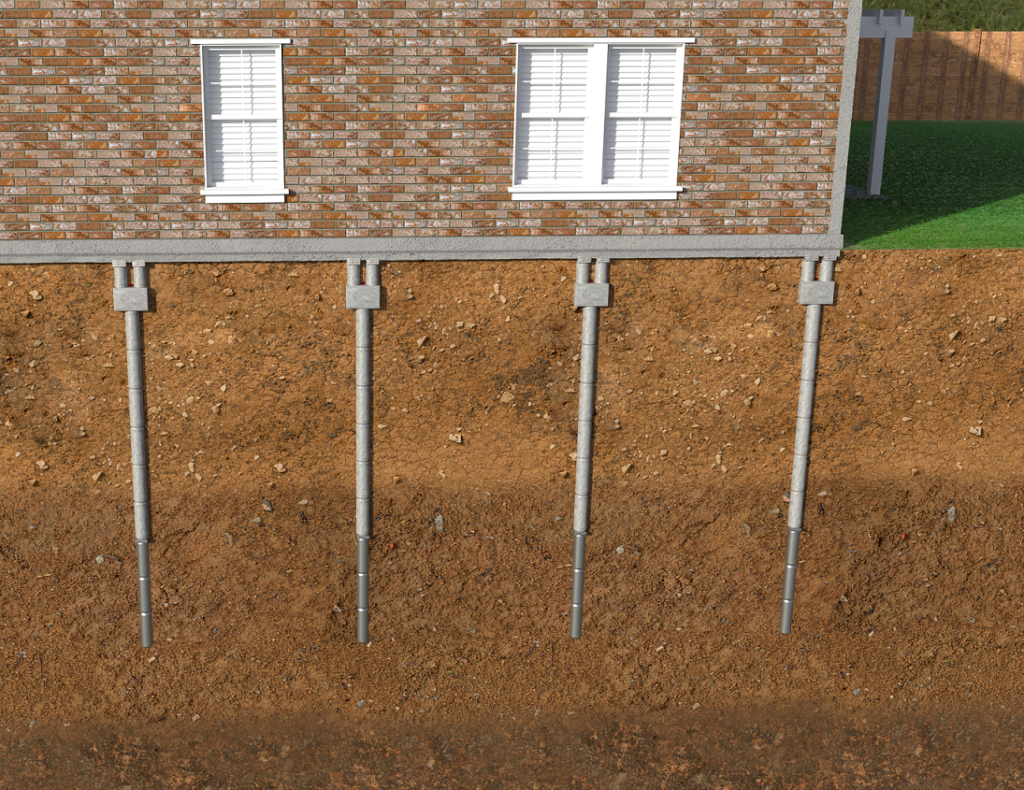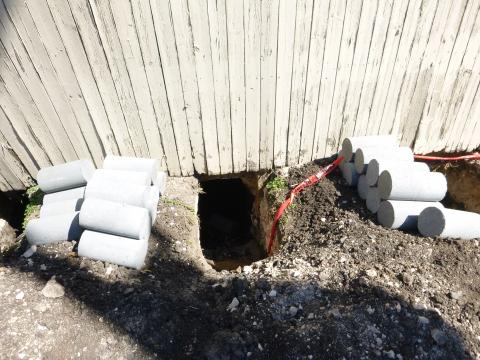The Ultimate Solutions for Foundation Repair Oklahoma City: Professional Insights
The Ultimate Solutions for Foundation Repair Oklahoma City: Professional Insights
Blog Article
Discovering Various Methods of Foundation Repair for Numerous Soil Types
Structure fixing is a vital aspect of keeping structural stability, specifically when considering the diverse obstacles presented by different soil kinds. The complexity of soil behavior under differing conditions demands a customized technique to fix, making sure optimum solutions such as helical piers for unstable soils or chemical cements for natural layers.
Comprehending Dirt Kinds
Dirt kinds play an important duty in the security and durability of building structures, making it necessary for house owners and construction specialists to understand their features and behavior. The communication between dirt and structure can establish the architectural integrity of a structure. There are numerous dirt types, each with distinct physical buildings that influence how foundations are designed and maintained.
Granular dirts, such as sand and crushed rock, provide good drain and are often taken into consideration stable. In contrast, cohesive dirts like silts and clays display different actions.
Rocky dirts, understood for their stamina and security, deal excellent assistance for foundations but may require specific devices for excavation. Conversely, loamy soils, which are a well balanced combination of silt, sand, and clay, commonly provide positive conditions for foundation assistance due to their modest drainage residential or commercial properties.

Recognizing these dirt types is important for choosing suitable foundation fixing approaches, guaranteeing the sturdiness and safety of frameworks with time.
Difficulties With Extensive Clay
Among the different soil kinds, extensive clay provides one-of-a-kind obstacles for structure security as a result of its propensity to undertake significant volume adjustments with wetness variant. This sort of soil swells when damp and agreements when dry, which can apply significant pressure on frameworks. These variations can lead to structure splitting, heaving, and settlement issues, posing substantial dangers to the structural stability of buildings.
The challenges with large clay are worsened by its plasticity index, which gauges the soil's capability to change form and volume. A high plasticity index shows greater possibility for movement, raising the possibility of damage to foundations. This is especially bothersome in regions experiencing severe or frequent weather condition changes, where cycles of damp and completely dry conditions prevail.
In addition, the deepness of expansive clay layers can vary, making complex the assessment and preparation of suitable structure repair methods. These intricacies require a detailed geotechnical evaluation to ensure effective structure repair methods are applied, highlighting the relevance of dealing with large clay challenges with know-how and care.
Solutions for Sandy Soils
Sandy soils, defined by their huge particle size and reduced cohesion, present unique difficulties for structure security due to their tendency for shifting and disintegration. By anchoring the foundation to much deeper, more steady dirt layers, these systems can provide the needed assistance to counteract the shifting nature of sandy dirts.
Another suggested strategy is the application of soil stabilization techniques. Chemical grouting, for instance, includes injecting a supporting agent into the soil, which boosts communication and lowers leaks in the structure. This procedure assists to solidify the sandy substrate, consequently minimizing the danger of disintegration and movement.
Additionally, installing proper drain systems is important in sandy soil conditions. Ensuring adequate water drainage can protect against water accumulation around the foundation, which often exacerbates erosion and soil displacement. Methods such as French drains or surface grading can be employed to route water away from the building perimeter.
Addressing Settling in Loamy Soils
Fertile dirts, understood for their balanced mix of sand, silt, and clay, use a productive base for numerous structures yet can occasionally result in structure settling as a result of their distinct make-up. This balanced appearance offers exceptional drainage and nutrient retention, making it suitable for farming and landscaping. However, this exact same characteristic can end up being bothersome for structures, as changes in dampness web content can cause the dirt to broaden or contract, bring about working out.
Exact dirt testing is crucial to establish the details structure and dampness material of the loam. As soon as data is collected, applying correct drainage options is vital to preserve consistent moisture levels, thus minimizing the danger of dirt tightening or growth.

Innovative Repair Strategies
In the realm of structure fixing, cutting-edge methods are continually being created to attend to the complex tests presented More Help by numerous soil problems. As soil types differ dramatically in their structural residential or commercial properties, typical methods might not always are sufficient. The advent of brand-new modern technologies in foundation fixing provides much more customized solutions, guaranteeing security and longevity.
One significant innovation is making use of helical piers, which are especially reliable in unstable or extensive soils (foundation repair okc ok). These piers are screwed right into the ground up until they get to a stable layer of dirt, offering strong assistance for the foundation above. This approach reduces interruption and is versatile to different soil types, making it a flexible remedy
Another cutting-edge method is the application of polyurethane foam injection. This technique entails infusing high-density polyurethane foam beneath the foundation to fill spaces and support the framework. It is a much less invasive alternative to typical Check This Out underpinning, using fast installation with marginal disruption to the surrounding location.
In addition, dirt stablizing approaches, such as the usage of chemical cements, have gained grip. These compounds enhance soil strength and reduce leaks in the structure, protecting against future shifting. Jointly, these cutting-edge fixing strategies give efficient services for the diverse obstacles postured by differing dirt problems.
Verdict

Structure repair is an essential aspect of preserving architectural honesty, especially when taking into consideration the diverse obstacles posed by different soil types (foundation repair okc). The complexity of soil habits under differing conditions requires a customized approach to repair, ensuring optimal services such as helical piers for unpredictable dirts or chemical grouts for get redirected here natural layers. By securing the structure to deeper, a lot more secure dirt layers, these systems can give the essential assistance to neutralize the changing nature of sandy dirts
Structure fixing calls for cautious consideration of soil types to guarantee stability and longevity. Chemical grouts enhance dirt toughness and minimize permeability in cohesive soils.
Report this page